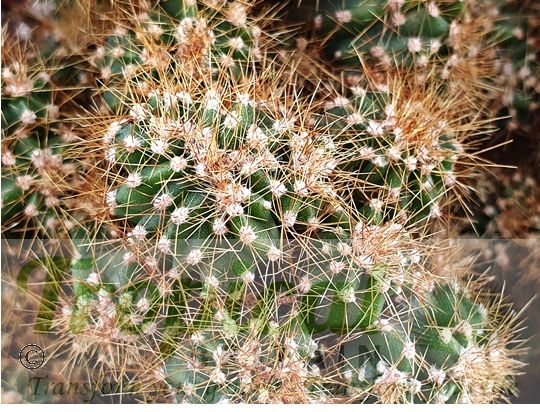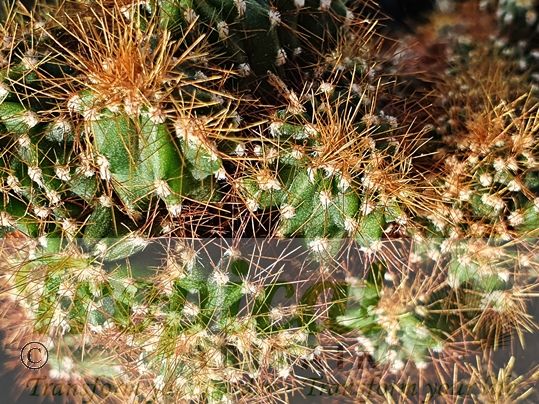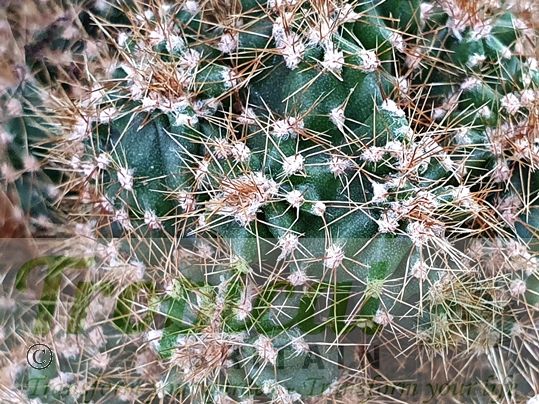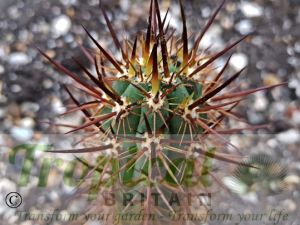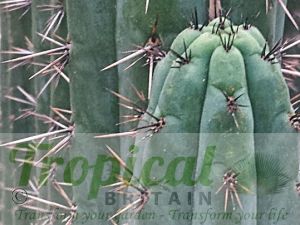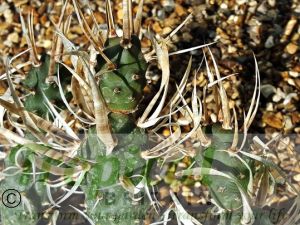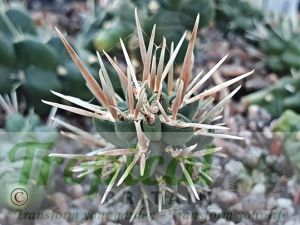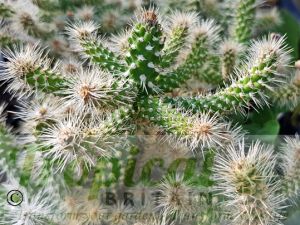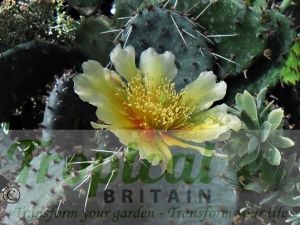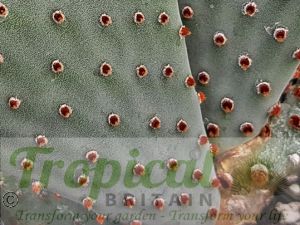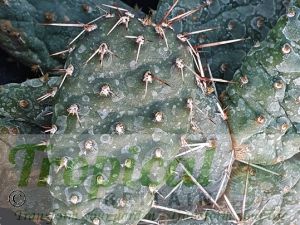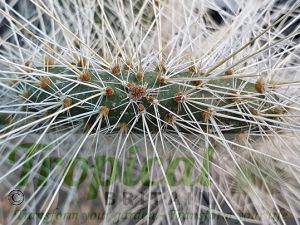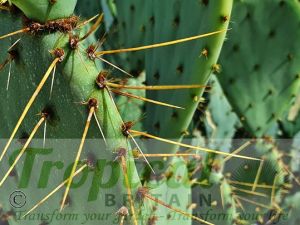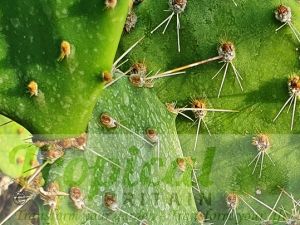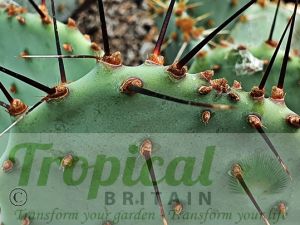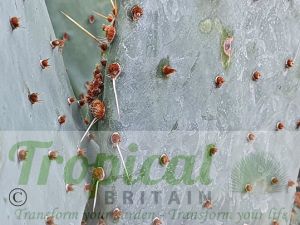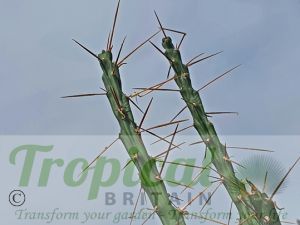Cereus repandus forma monstrosa
The monstrose form of Cereus repandus is usually found labelled as Cereus peruvianus 'Monstrosa'. Whereas the regular form of Cereus repandus is characterised by its tall columnar shape, high open ribs and well-spaced areoles and spines, the montrose form is completely different with its many knobbly growing points and bristly brown spines. It makes a perfect no-fuss low-maintenance houseplant. Although just as fast growing as the regular form, because the monstrose form has so many and ever-multiplying growing points its overall growth seems slow and it takes many years for it to reach a statuesque specimen size. The random and assymetrical shapes are a result of a genetic mutation that creates many apical meristems rather than one growing apex.
An ideal plant for indoors or as a first cactus for a budding young horticulturalist, Cereus repandus forma monstrosa is also an ideal introduction to the strange world of genetically mutant cacti. Easy to grow and very undemanding, its requirements are simple: lots of light and very little water. Keep it in a sunny aspect, water it only during the growing season from March through to October and not at all during the winter. Because of its many nooks and crannies, special care should be taken to keep a vigilent eye out for mealy bugs.
Additional Information
| Order | Caryophyllales |
|---|---|
| Family | Cactaceae |
| Sub-Family | Cactoideae |
| Synonyms | Acanthocereus horribarbis, Cactus peruvianus, Cactus repandus, Cephalocereus atroviridis, Cephalocereus remolinensis, Cereus atroviridis, Cereus gracilis, Cereus grenadensis, Cereus lanuginosus, Cereus margaritensis, Cereus peruvianus, Cereus remolinensis, Cereus russelianus, Neoraimondia peruviana, Pilocereus atroviridis, Pilocereus fricii, Pilocereus repandus, Pilocereus swartzii, Piptanthocereus peruvianus, Stenocereus peruvianus, Subpilocereus atroviridis, Subpilocereus grenadensis, Subpilocereus margaritensis, Subpilocereus remolinensis, Subpilocereus repandus |
| Geographical Origin | Colombia, Venezuela, Caribbean |
| Cultivation | Full sun. A free-draining mineral substrate. Water sparingly in the growing season. No water from mid-October to late February. Keep a keen lookout for mealy bugs. Ideal houseplant |
| Eventual Height | 1-2m |
| Eventual Spread | 30cm |
| Hardiness | Indoors in the winter. Or in a cool glasshouse under fleece. Can be placed outdoors or on a balcony through summer taking care that it doesn't get waterlogged in summer showers |

Free DELIVERY
ON ALL ORDERS OVER £99THIS OFFER IS VALID ON ALL OUR STORE ITEMS.

